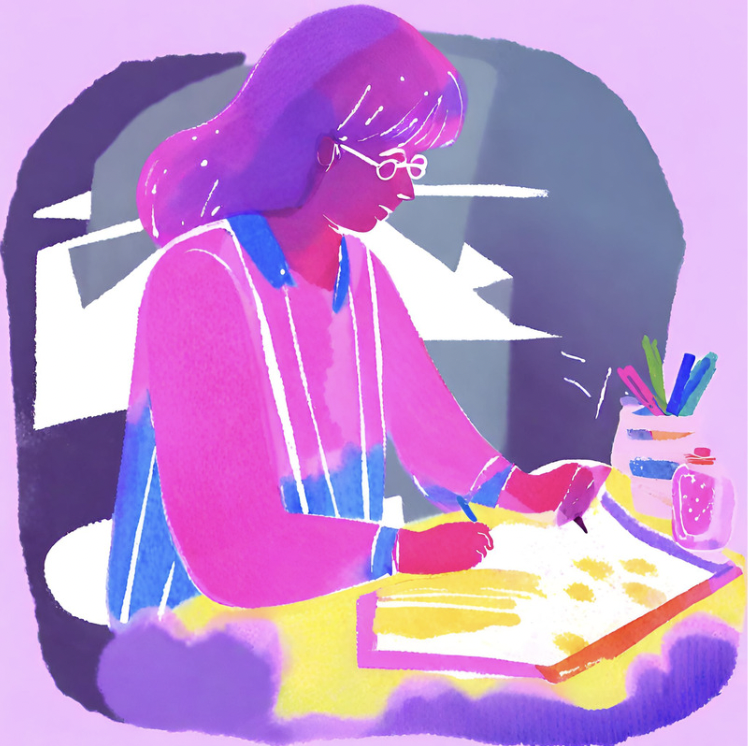How to Self-Edit Like a Pro
Written by Rylie Miller
You’ve been putting hours of writing into a piece of content. You’ve researched, interviewed, and optimized.
You finally add that closing line, throw a period at the end of it, and BOOM. You’re done and ready to publish!
Not so fast. Writing the content is only part of the process. Next comes arguably the most important part of writing: editing.
There’s a reason that a first draft is typically referred to as a “rough” draft. Editing is what turns a “meh” piece into a “WOW” one. It’s also one that ensures you get all of your facts right, saving you from any legal issues. Great editing is what gets people talking and sharing. It’s what makes your words valuable.
Self-editing your work can be tough.
Some of us tend to get attached to our work, never wanting to kill our darlings. Others can ruthlessly edit themselves to no end.
We reached out to pros across the writing community for their best tips and tricks on how to self-edit like a champ.
Take Some Space
Distance makes your eyes more critical, helping you discover where your content could use more attention. One of the first things writers should do is step away from the computer.
Gabrielle Michelle Yap, Senior Editor & Culinary Entrepreneur at CarnivoreStyle
“As an editor for over 5 years, one of my best tips for self-editing is to take a step back before starting the editing process. It might sound cliché, but giving yourself a bit of distance from your work allows you to approach it with fresh eyes, which is absolutely crucial. You see, when you've just finished writing, you're often too close to the content to see its flaws objectively. Hence, taking some time away—whether for a few hours, a day, or even longer—can have a significant impact on how you perceive your writing when you return to it. Believe me, it works wonders.”
There’s an AI for That!
Let AI be your first editor – in fact, let it edit you while you work. Work smarter, not harder.
Natalie Lambert, Founder and Managing Partner at GenEdge
“Self-editing is an area in which AI thrives. With AI, writers have a collaborator so they aren't writing alone. Writers should use AI to ensure their content is well-written, persuasive, and error-free. A few simple prompts to your favorite AI tool, such as ‘read this [article] as if you are [your audience] and tell me where there are flaws in my argument’ and the follow-up of ‘please edit this [article] and find all of the grammar mistakes, strange word choices, or style inconsistencies and provide them to me in a bulleted list’ will consistently uplevel the work.”
Josh Brown, SEO + Content Marketing Manager, HelpJuice
“Make use of apps like Grammarly or Hemingway as well as LLMs like ChatGPT or Gemini to catch grammatical errors, passive voice, overuse of words, etc. Remember that these tools should be used more as assistants than replacements for your judgment.”
Speak Now
Seeing is believing, but hearing is a whole different thing.
Cassie Christman, Content Specialist, Expert Copywriter, SEO Strategist, and Marketer at JS Interactive, LLC
“You need to either read your work out loud or use a text-to-speech tool to read aloud to you. This is crucial for me because it really helps me to catch mistakes that I would otherwise miss. Missing a word? You'll be able to hear it. Are your sentences too long? You'll be able to hear that, too. I, personally, like to have a text-to-speech tool on my computer to read aloud to me because it works almost like having someone else read my work to me. In my process, this step helps me really catch the smallest of errors, ensuring that I am sending out my best work.”
Get Crafty
Sometimes it’s just a matter of changing your perspective. Here are a few creative ways to self-edit your own writing.
Sandra Beckwith, Freelance Writer
“I copy and paste the final text into an email message and send it to myself. Yes, that's odd, but it works! I can't explain it, but when I see it in an email message, any opportunities for improvement jump out at me.”
Richard C. Ford, Founder at Hart Accounting Services
“One technique is to read your draft backward, sentence by sentence. This helps focus on each statement in isolation without your brain automatically filling in the context from what came before. You'd be surprised at the clunky phrasing or redundancies this reveals.”
Faizan Fahim, InfraCloud
“Changing the font of text: Changing the text’s font might seem stupid but it is really smart. Our eyes and brains get so comfortable with the content, that we can become blind to tiny mistakes like typos, grammar, and commas. We have to read the content a number of times for major changes, restructure, and value addition.”
David Barkoe, CEO and Founder of Carve Communications
“Print it out. We're so attached to our screens...we type and then read and type and read. Go old school and print out what you've written and line edit it with a good old-fashioned pen. Does wonders when you look at and read the printed word versus the digital word.”
Dissect It
Editing can seem like a daunting task, but breaking it down into smaller parts can ease your mind.
Benedict Ang, Senior Fitness Coach & Writer at TotalShape
“Don't underestimate the power of multiple rounds of editing. I usually go through at least two or three passes, each with a specific focus – one for structure, another for style, and the last for grammar and punctuation. It might seem time-consuming, but the clarity and polish you gain are totally worth it. Each round of editing allows you to hone in on different aspects of your writing, making sure that every sentence serves its purpose and contributes to the overall effectiveness of your piece.”
Gabrielle Michelle Yap, Senior Editor & Culinary Entrepreneur at CarnivoreStyle
“I focus on the big picture first. I tackle issues like structure, flow, and coherence. Is my message clear? Does the content follow a logical sequence? Addressing these broader aspects before diving into the nitty-gritty details ensures that the foundation of my piece is solid. This approach saves time in the long run because it prevents you from getting bogged down in minor edits before addressing more significant issues. It's like building a house—you want to make sure the structure is sound before worrying about paint colors or furniture placement.”
Reflect
Self-editing your own work may seem tedious, but it makes you a stronger writer with each pass.
Alli Hill, Founder and Director at Fleurish Freelance
“Treat every mistake and change as a learning opportunity. The more you edit your work, the more natural it feels.”
Debbie Moran, Marketing Manager at RecurPost
“As for becoming better at editing myself, it's been a journey of trial and error. I've learned to be more patient with myself and to embrace the process rather than seeing it as a chore. Practice really does make perfect, so the more you edit, the better you'll become. And remember, nobody's perfect – even the best writers and editors make mistakes. The important thing is to keep striving for improvement.”
****
Becoming a better writer is a marathon, not a sprint. It takes time to hone in on your craft. While self-editing requires getting in the weeds of your work, you must get outside your head.
Are there any tips for self-editing you’d add? Send us an email!

